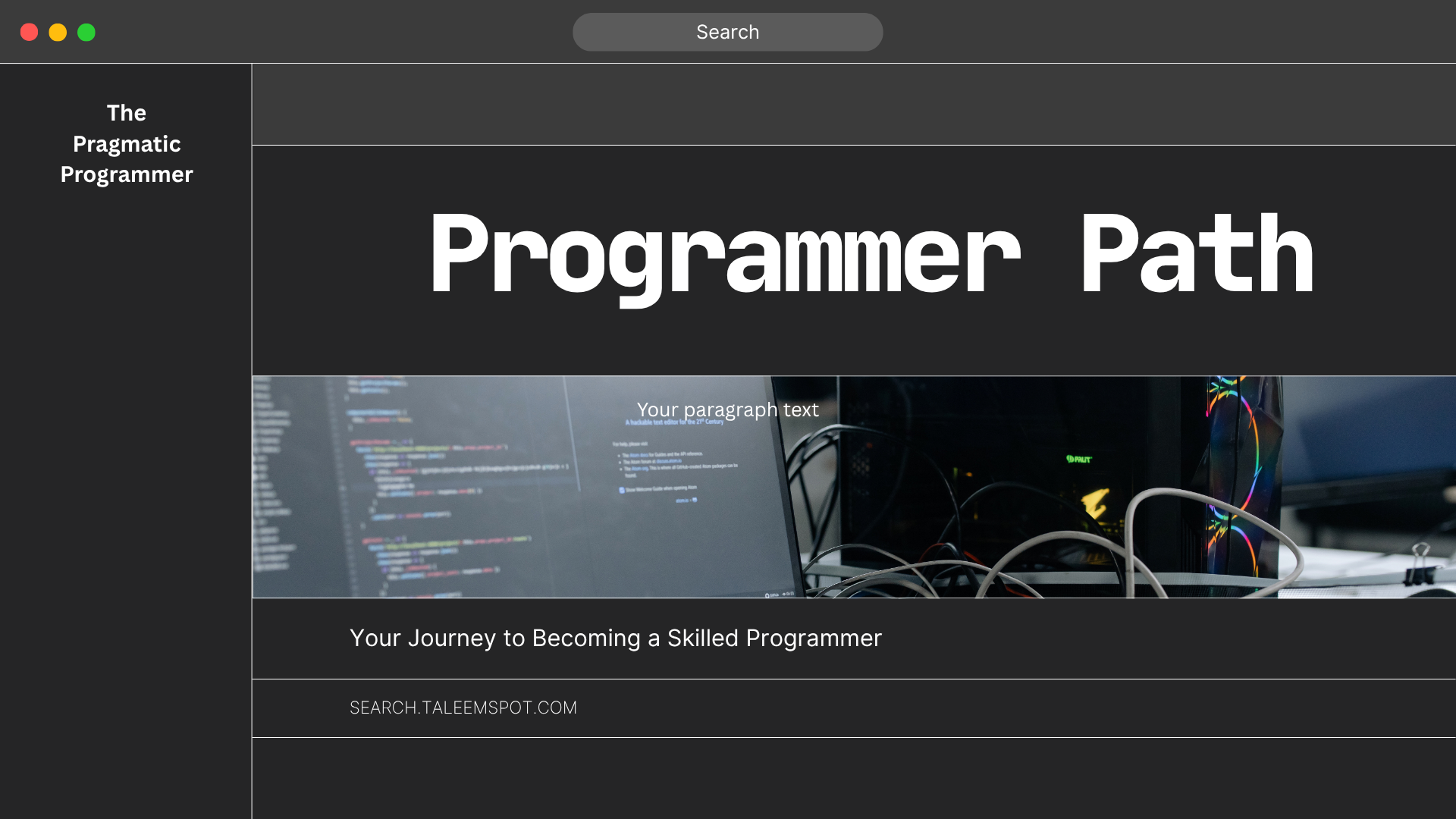Introduction
The Pragmatic Programmer: Your Journey to Mastery is a seminal book in software engineering authored by Andrew Hunt and David Thomas, first published in 1999. Often hailed as a “software developer’s bible,” the book transcends mere programming techniques and dives deep into the mindset, habits, and philosophy that underpin successful software craftsmanship. Its timeless advice continues to resonate with developers decades after its release, making it a must-read for beginners and seasoned engineers alike.
Origins and Authors
Andrew Hunt and David Thomas are experienced software consultants who recognized a gap in programming education. Rather than focusing solely on specific languages or frameworks, they set out to provide pragmatic, practical advice to help developers become more effective and resilient problem-solvers. Their collective experience working on real-world projects shaped a book that goes beyond coding syntax into how developers think, communicate, and grow professionally.
Core Philosophy
The central tenet of The Pragmatic Programmer is that software development is both an art and a craft — requiring a blend of technical skill, thoughtful decision-making, and continuous learning. It encourages developers to be proactive, resourceful, and adaptable, always seeking to improve their work and themselves.
Some of the foundational ideas include:
- Think! About Your Work
The book encourages conscious thinking about code, design, and the development process, rather than blindly following recipes. - Don’t Repeat Yourself (DRY)
A principle that emphasizes the elimination of redundancy to avoid inconsistencies and wasted effort. - Orthogonality
Designing systems where components operate independently to minimize interdependencies and complexity. - Tracer Bullets
Using rapid prototyping techniques to build a skeletal system that can be refined iteratively. - The Broken Window Theory
Addressing small defects immediately to maintain code quality and team morale.
Key Themes and Lessons
1. Care About Your Craft
A recurring theme is that programmers should treat coding like a craft, with pride in producing clean, maintainable, and elegant code. The book champions craftsmanship over rushing or cutting corners.
2. Communicate Effectively
Programming isn’t just about writing code; it’s about collaborating with teams, stakeholders, and users. Clear communication—through documentation, code comments, or conversations—is vital.
3. Learn Continuously
Technology evolves rapidly. Pragmatic programmers must cultivate a growth mindset, always learning new tools, languages, and paradigms while refining foundational skills.
4. Master Your Tools
The authors emphasize investing time to understand and leverage your development environment and tools to boost productivity.
5. Write Flexible, Reusable Code
Code should be modular and adaptable to change. The book advocates designing software so it can evolve gracefully.
6. Test Early and Often
Testing is not an afterthought but an integral part of development. Automated tests help catch issues early, making refactoring and scaling safer.
7. Automate Repetitive Tasks
Automation frees developers from mundane work, reduces human error, and speeds up processes such as builds, deployments, and testing.
Iconic Concepts Explained
- DRY (Don’t Repeat Yourself):
This principle underlines that duplication in code and processes leads to inconsistencies and wasted effort. Instead, knowledge should have a single, unambiguous representation. - Tracer Bullets:
Drawing from military analogy, tracer bullets in programming means building a thin slice of functionality end-to-end to validate assumptions and guide development. This iterative approach reduces risk and aligns teams. - The Broken Window Theory:
Borrowed from urban sociology, it states that visible signs of neglect (broken windows) invite further decay. In software, ignoring small bugs or messy code leads to bigger quality issues.
Impact and Legacy
The Pragmatic Programmer helped pioneer the mindset that modern Agile, DevOps, and Continuous Delivery practices now widely embrace. It shifted the developer’s focus from simply writing code to thinking about software as a holistic, evolving system.
Many developers cite this book as life-changing, crediting it for improving their craftsmanship, problem-solving abilities, and career trajectories. Concepts from the book appear regularly in programming courses, tech talks, and software development blogs.

Practical Applications in Daily Development
- Code Reviews:
Applying pragmatic principles during code reviews helps teams catch duplicated logic, enforce orthogonality, and maintain quality. - Refactoring:
Encouraged as a regular habit to keep codebases clean and flexible. - Project Planning:
Using tracer bullet techniques for early feedback and iterative delivery. - Tool Mastery:
Leveraging IDE shortcuts, build tools, and debugging utilities to work smarter. - Automated Testing:
Building and maintaining comprehensive unit and integration tests to ensure reliability.
Criticisms and Considerations
While the book is highly praised, some readers find parts of it dated, particularly where specific tool recommendations have evolved since 1999. However, the underlying principles remain robust and widely applicable.
Some beginners may initially struggle with the conceptual focus rather than concrete code examples, but the abstract thinking encouraged is valuable for long-term growth.
Conclusion
The Pragmatic Programmer remains one of the most influential and enduring works in software development literature. Its wisdom encourages developers to be thoughtful, adaptable, and committed to quality craftsmanship. Whether you are new to programming or a seasoned engineer, this book offers valuable lessons that help build better software and grow as a professional.
In the fast-changing world of technology, the pragmatic programmer mindset is a beacon of consistency and excellence.


